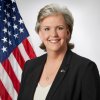FDA issues new sunscreen regulations, information
Q. I am totally confused about sunscreens. Advice?
Well, you’re not alone. However, this summer, your choices will be easier to make because the U.S. Food and Drug Administration has implemented new sunscreen regulations.
First, some background on sunscreens.
Sunscreens work to prevent the damage of ultraviolet rays, an invisible component of sunlight. There are three types of UV rays: UVA, UVB and UVC.
UVA is the most abundant of the three ultraviolet rays at the Earth’s surface. These rays penetrate through the outer skin layer.
Many of the UVB rays are absorbed by the stratospheric ozone layer, so there aren’t as many of these at the Earth’s surface as the UVA rays. UVB rays don’t penetrate as far as UVA rays, but are still harmful.
UVC radiation is extremely hazardous to skin, but it is completely absorbed by the ozone layer.
Sunburn and suntan are signs of skin damage. Suntans appear after the sun’s rays have already killed some cells and damaged others. UV rays do more harm than damaging skin. They can also cause cataracts, wrinkles, age spots and skin cancer.
Sunscreens are given SPF (Sun Protection Factor) ratings that tell you how well they protect you from damaging rays from the sun. The SPF ratings can be as low as two and as high as 100-plus.
Here’s how the ratings work: If you apply a sunscreen rated at SPF 2, you will double the time it takes for your skin to burn.
A sunscreen rated at SPF 15 will multiply the burning time by 15.
The SPF number indicates the screening ability for UVB rays only. Research is being to done to establish a system to measure UVA protection.
There is a point of diminishing returns with sunscreens. Here’s how it goes:
• A sunscreen with an SPF of two screens 50 percent of UVB rays.
• A sunscreen with an SPF of 15 screens 93 percent of UVB rays.
• A sunscreen with an SPF of 30 screens 97 percent of UVB rays.
• A sunscreen with an SPF of 50 blocks 98 percent of UVB rays.
• A sunscreen with an SPF of 100 blocks 99 percent of UVB rays.
Not applying enough sunscreen can seriously reduce your protection. You should use an ounce - about a palmful - on your body to gain the full protection indicated by the SPF on the product. Also, dermatologists advise reapplication every two hours or after swimming or sweating.
Under the new FDA regulations, labels will include the following information:
• Broad Spectrum. A broad-spectrum sunscreen protects against UVB and UVA rays and helps prevent skin cancer and sunburn.
• Sun Protection Factor (SPF). The FDA’s minimum recommendation for protection against skin cancer and sunburn is SPF 15.
• Skin Cancer/Skin Aging Alert. For a sunscreen to carry the claim that it can help prevent skin cancer and early skin aging in addition to sunburn, it must offer both broad-spectrum coverage and an SPF of 15 or higher. If not, the label will carry the Skin Cancer/Skin Aging Alert.
• Water Resistance. The sunscreen’s resistance to water will be designated for up to 40 minutes or 80 minutes. Sunscreens can not be described as “waterproof” or “sweat proof.”
All sunscreen products that do not pass the new FDA requirements will include warning labels specifying their sun-protective limitations.
To reduce your risk of skin cancer and early skin aging, the American Academy of Dermatology recommends everyone choose a sunscreen that states the following on the label: broad spectrum, SPF 30 or higher, and water resistant up to either 40 or 80 minutes.





















































